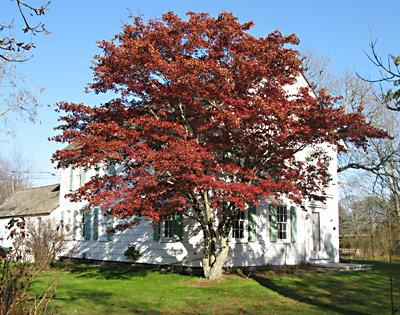History Center Proposed for North Main Street

The Sherrill farmhouse and acreage, owned by the same family since 1792, is an excellent site for an East Hampton history center, Prudence Carabine believes.
An 11th-generation member of a local family, Ms. Carabine has been involved in the creation of a farm museum nearby, on the former Lester-Labrozzi farmstead site, which is owned by East Hampton Town.
Now, she said earlier this week, she hopes to see the Sherrill property, at the foot of Springs-Fireplace Road and its intersection with North Main Street, also preserved.
Originally home to the Sherrill Dairy, the site includes separate properties containing the historic house, a smaller house built later by the late Sherrill Foster, and three acres of the original pastureland.
“Dairying was a big deal out here,” Ms. Carabine noted. “There were 16 dairies between East Hampton and Amagansett.” Artifacts preserved and recently obtained from the former Tillinghast Dairy could be displayed there, she suggested.
Ms. Carabine presented the idea last week to the town’s community preservation fund committee, which evaluates proposed purchases earmarked for open space and historic preservation. “The reception was very enthusiastic,” she said. She also spoke about it to the town board at a meeting last week.
Mary Morgan, one of a pair of siblings who inherited the property, was on hand, and said she would like to see the sale occur. The property has been on the market. Some buyers have indicated interest, but none who would preserve the site as is.
Stephen Sherrill bought the house from the Conklin family in 1792, according to a deed that the Sherrill family still has, Ms. Carabine said. Other records the family has retained, such as Revolutionary and Civil War-era letters and other papers, offer a valuable glimpse into history, she pointed out.
The Sherrill house is one of 29 in East Hampton that are listed on the National Register of Historic Places. Generations of the family added on to it, or made changes, “and those renovations are clearly visible,” Ms. Carabine said.
She can picture a museum space downstairs, showing a house typical of circa 1850, and an upstairs space in which visiting scholars might reside. With the second house on the property, and the farmland, there could be an organic garden, Ms. Carabine said, with the potential to process the produce, or make traditional foods, in the kitchens.
The Sherrill site “would be a sister” to the farm museum already being planned. “North Main Street is an area that has a great deal of historic value,” Ms. Carabine said, an area where locals — “people who weren’t wealth” — settled. “There is a lot of history there that has just never been told or developed.”
A committee appointed by the town board, of which Ms. Carabine is a member, is working on the Lester-Labrozzi farm museum. A house there will be set up as a typical farmstead would have been in the years between 1900 and 1930, “because that’s the age of that farmhouse when it was last renovated,” Ms. Carabine explained.
The grounds will be used for outdoor public events or as a park. Councilwoman Theresa Quigley has suggested it become the home of the East Hampton Farmers Market, which now operates seasonally in the parking lot of Nick & Toni’s restaurant across the street, but the legality of a commercial use of the land, purchased with preservation fund money, is unclear.
Right now, Ms. Carabine said, the committee is working with town officials and staff to evaluate what repairs and updates need to be completed on the house and barn, “to try to move forward so that next year at this time, we will be able to open, and have rotating exhibits and activities on the property.”
